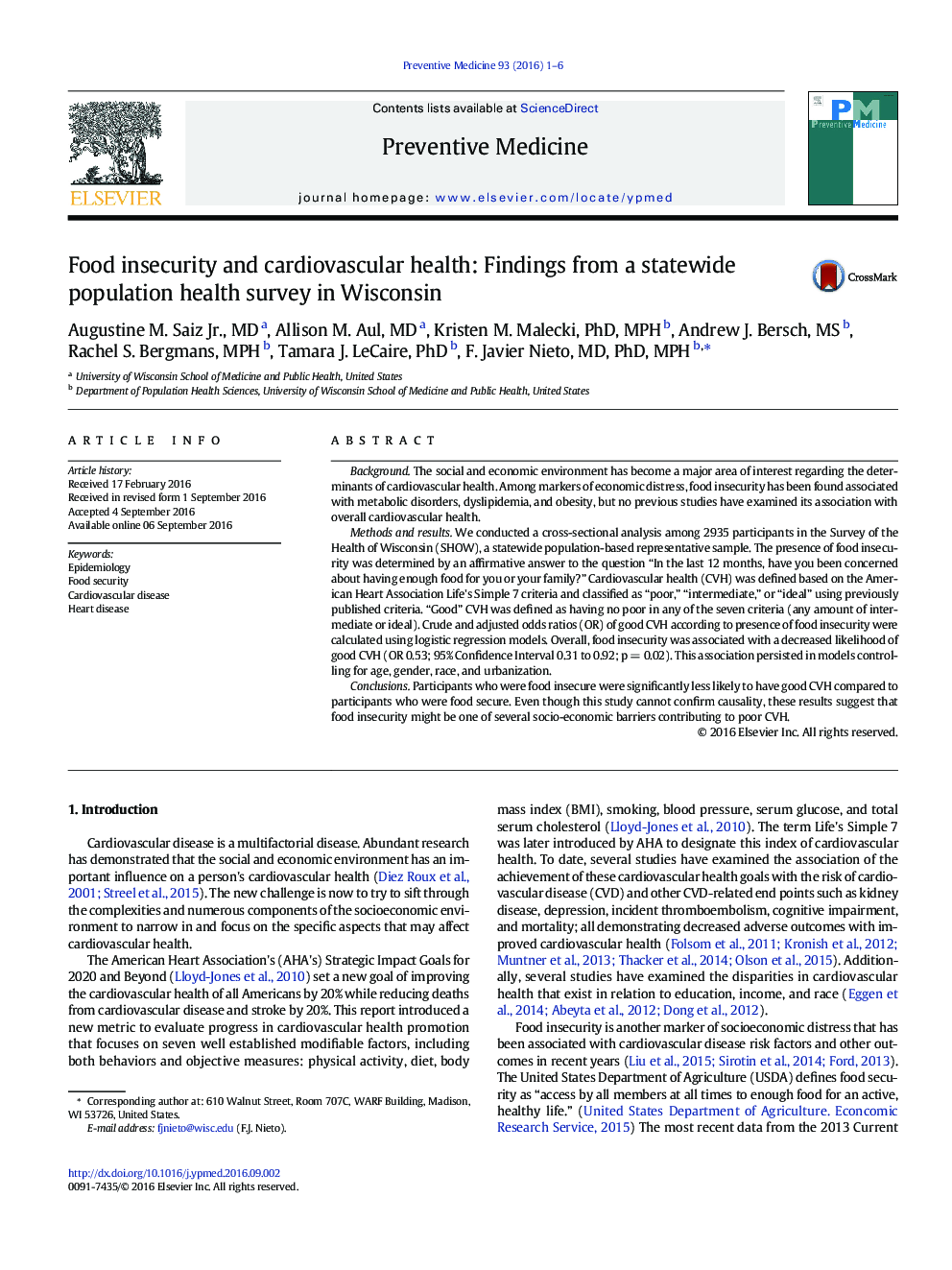| کد مقاله | کد نشریه | سال انتشار | مقاله انگلیسی | نسخه تمام متن |
|---|---|---|---|---|
| 3100283 | 1581621 | 2016 | 6 صفحه PDF | دانلود رایگان |
• Over one in ten people in this population-based sample are food insecure.
• Food insecure participants were less likely to have good cardiovascular health.
• Food insecurity affects AHA Life's Simple 7 components to varying degrees.
BackgroundThe social and economic environment has become a major area of interest regarding the determinants of cardiovascular health. Among markers of economic distress, food insecurity has been found associated with metabolic disorders, dyslipidemia, and obesity, but no previous studies have examined its association with overall cardiovascular health.Methods and resultsWe conducted a cross-sectional analysis among 2935 participants in the Survey of the Health of Wisconsin (SHOW), a statewide population-based representative sample. The presence of food insecurity was determined by an affirmative answer to the question “In the last 12 months, have you been concerned about having enough food for you or your family?” Cardiovascular health (CVH) was defined based on the American Heart Association Life's Simple 7 criteria and classified as “poor,” “intermediate,” or “ideal” using previously published criteria. “Good” CVH was defined as having no poor in any of the seven criteria (any amount of intermediate or ideal). Crude and adjusted odds ratios (OR) of good CVH according to presence of food insecurity were calculated using logistic regression models. Overall, food insecurity was associated with a decreased likelihood of good CVH (OR 0.53; 95% Confidence Interval 0.31 to 0.92; p = 0.02). This association persisted in models controlling for age, gender, race, and urbanization.ConclusionsParticipants who were food insecure were significantly less likely to have good CVH compared to participants who were food secure. Even though this study cannot confirm causality, these results suggest that food insecurity might be one of several socio-economic barriers contributing to poor CVH.
Journal: Preventive Medicine - Volume 93, December 2016, Pages 1–6
